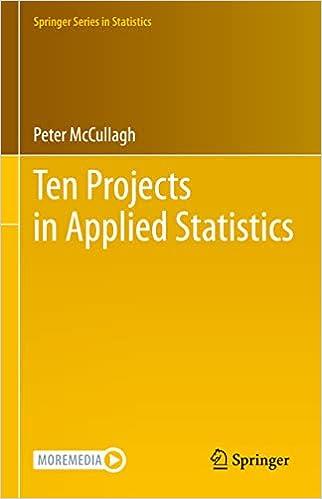Let (Theta) be the extended complex plane. For each (theta=theta_{0}+i theta_{1}) let (P_{theta}) be the distribution on
Question:
Let \(\Theta\) be the extended complex plane. For each \(\theta=\theta_{0}+i \theta_{1}\) let \(P_{\theta}\) be the distribution on the extended real line with density
\[
P_{\theta}(d y)=\frac{\left|\theta_{1}ight| d y}{\pi|y-\theta|^{2}}
\]
for \(\theta_{1} eq 0\), or the Dirac measure \(\delta_{\theta}(d y)\) if \(\theta_{1}=0\) or \(\theta=\infty\). Each treatment effect is a non-singular \(2 \times 2\) real matrix
\[
g=\left(\begin{array}{ll}
a & b \\
c & d
\end{array}ight)
\]
acting on \(\Theta\) as a fractional linear transformation
\[
g \theta=\frac{a \theta+b}{c \theta+d}
\]
Show that the set of fractional linear transformations is a group, that \(\theta \mapsto g \theta\) is a group action with two orbits in \(\Theta\), and that \(P_{g \theta}\) is the Cauchy distribution with parameter \(g \theta\).
Step by Step Answer:






